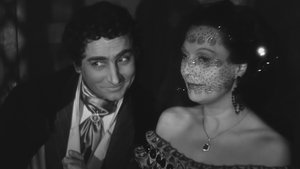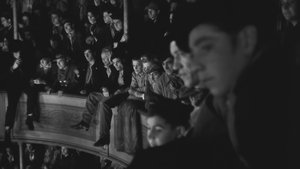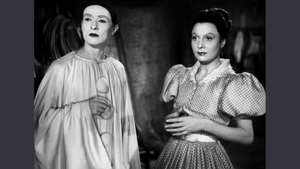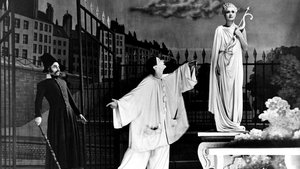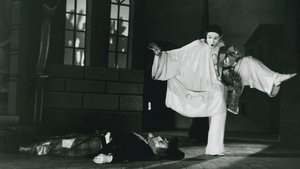Contact: info@alwanfilm.com
Video Sources 0 Views
- Watch trailer
- Children of Paradise

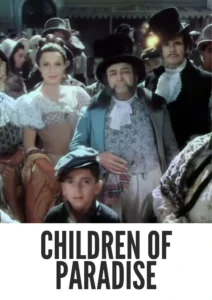
Synopsis
Table of Contents
ToggleReview: Children of Paradise 1945 Colorized – A Timeless Masterpiece of French Cinema

Introduction
Children of Paradise, released in 1945, is a landmark achievement in French cinema, directed by Marcel Carné. Renowned for its epic scope, rich characters, and poetic storytelling, this classic film continues to enchant audiences with its timeless exploration of love, art, and the human spirit. In this review, we’ll delve into the enchanting world of Children of Paradise and its enduring legacy in the history of cinema.
Check The Full Colorized Movies List
Check Our Colorized Movies Trailer Channel
Understanding Children of Paradise 1945 Colorized: Director, Cast, and Genre
Directed by Marcel Carné, Children of Paradise features a stellar ensemble cast led by Arletty, Jean-Louis Barrault, and Pierre Brasseur. The film belongs to the drama genre, known for its emotive storytelling, lush cinematography, and profound themes.
Exploring the World of Children of Paradise 1945 Colorized: Plot and Characters
Children of Paradise transports viewers to the vibrant streets of 19th-century Paris, where the lives of four individuals become intertwined in a complex web of love, desire, and betrayal. Against the backdrop of the bustling theater scene, we follow the journey of Garance, a mysterious and enigmatic woman whose beauty captivates all who encounter her. As Garance navigates the intricacies of love and longing, she becomes entangled with the passions and ambitions of the men who vie for her affections, leading to heartbreak, tragedy, and ultimately, redemption.
The Art of Film Colorization
While Children of Paradise was originally filmed in black and white, its early colorized version adds a new layer of depth to its lush visuals. The colorization process enhances the film’s sumptuous cinematography and captures the vibrant energy of 19th-century Paris with striking clarity.
Early Colored Films: A Brief History
The history of early colored films is marked by innovation and experimentation as filmmakers sought to enhance the visual appeal of their movies. From hand-tinted frames to pioneering technicolor processes, the evolution of colorization techniques transformed the cinematic landscape, offering audiences a new way to experience the beauty and splendor of classic films.
Children of Paradise (1945) and Its Early Colored Version
The decision to release Children of Paradise in a colorized format was made with the intention of immersing audiences in the lush beauty of its period setting and enhancing the film’s visual impact. While some purists may prefer the original black and white version, the early colorized edition of Children of Paradise adds a new layer of depth to its sumptuous cinematography and captures the vibrant energy of 19th-century Paris with breathtaking clarity.
The Debate Over Film Colorization
The debate over film colorization continues to divide audiences and industry professionals alike. While some argue that colorization breathes new life into classic films and makes them more accessible to modern audiences, others maintain that it compromises the artistic integrity of the original work. As technology advances and filmmaking techniques evolve, the debate over colorization remains a topic of ongoing discussion within the film community.
Examining Children of Paradise (1945) as an Early Colored Film
Viewing Children of Paradise in its early colorized iteration offers audiences a fresh perspective on its lush visuals and richly drawn characters. The colorization process enhances the film’s sumptuous cinematography and captures the vibrant energy of 19th-century Paris with stunning clarity. As viewers are transported to the bustling streets of the city of lights, they are treated to a visual feast that immerses them in the timeless beauty of classic French cinema.
Influence and Legacy: Children of Paradise 1945 Colorized’s Impact on Cinema
Children of Paradise is widely regarded as a masterpiece of French cinema that continues to captivate audiences with its epic scope, rich characters, and poetic storytelling. Its exploration of timeless themes such as love, art, and the human spirit has left an indelible mark on the history of cinema, inspiring generations of filmmakers and enchanting viewers around the world.
Director’s Cinematic Legacy: Beyond Children of Paradise 1945 Colorized
Marcel Carné’s directorial legacy extends far beyond Children of Paradise, encompassing a diverse body of work that includes acclaimed films such as Port of Shadows and Daybreak. As one of the most revered filmmakers of his generation, Carné was known for his ability to craft visually stunning films that explored the complexities of the human condition with depth and nuance. Children of Paradise stands as a testament to his talent and creativity, solidifying his reputation as one of the great auteurs of French cinema.
Themes Explored in Children of Paradise 1945 Colorized
At its core, Children of Paradise explores themes of love, desire, and the search for meaning in a world filled with beauty and sorrow. Through its lush visuals and richly drawn characters, the film offers a poignant meditation on the nature of art, the passage of time, and the enduring power of human connection.
Reception and Controversy Surrounding Children of Paradise 1945 Colorized
Upon its release, Children of Paradise received widespread critical acclaim for its epic scope, rich characters, and poetic storytelling. While the decision to release the film in a colorized format sparked debate among purists, its enduring popularity has cemented its status as a timeless classic of French cinema.
Where to Watch Children of Paradise 1945 Colorized Online
For those eager to experience Children of Paradise for themselves, the film is readily available on popular streaming platforms such as Amazon Prime Video, Google Play Movies, and iTunes. Whether viewed in its original black and white format or its early colorized iteration, Children of Paradise offers a cinematic experience that is both visually stunning and emotionally resonant.
FAQs About Children of Paradise 1945 Colorized
1. Is Children of Paradise based on a true story?
No, Children of Paradise is a fictional film that transports viewers to the vibrant streets of 19th-century Paris, where the lives of four individuals become intertwined in a complex web of love, desire, and betrayal. While the film’s storyline may draw inspiration from real-life events, its characters and plot are works of fiction.
2. Who starred in Children of Paradise?
Children of Paradise features a talented ensemble cast led by Arletty in the role of Garance, a mysterious and enigmatic woman whose beauty captivates all who encounter her. She is supported by Jean-Louis Barrault, who delivers a memorable performance as the mime Baptiste, and Pierre Brasseur as the dashing thief Frédérick.
3. What is the central message of Children of Paradise?
At its core, Children of Paradise explores the nature of art, the passage of time, and the enduring power of human connection in a world filled with beauty and sorrow. Through its lush visuals and richly drawn characters, the film offers a poignant meditation on the search for meaning and the quest for love and redemption.
4. Why was Children of Paradise released in a colorized format?
The decision to release Children of Paradise in a colorized format was made with the intention of immersing audiences in the lush beauty of its period setting and enhancing the film’s visual impact. While some purists may prefer the original black and white version, the early colorized edition of Children of Paradise adds a new layer of depth to its sumptuous cinematography and captures the vibrant energy of 19th-century Paris with breathtaking clarity.
5. What is the legacy of Children of Paradise?
Children of Paradise is widely regarded as a masterpiece of French cinema that continues to captivate audiences with its epic scope, rich characters, and poetic storytelling. Its exploration of timeless themes such as love, art, and the human spirit has left an indelible mark on the history of cinema, inspiring generations of filmmakers and enchanting viewers around the world.
6. Are there any sequels or remakes of Children of Paradise?
No, there have been no official sequels or remakes of Children of Paradise. However, the film’s enduring popularity has inspired countless reinterpretations and homages in various media. Nonetheless, none have captured the epic scope and richly drawn characters of the original 1945 classic.
7. Where can I watch Children of Paradise online?
For those eager to experience Children of Paradise for themselves, the film is readily available on popular streaming platforms such as Amazon Prime Video, Google Play Movies, and iTunes. Whether viewed in its original black and white format or its early colorized iteration, Children of Paradise offers a cinematic experience that is both visually stunning and emotionally resonant.
Conclusion
In conclusion, Children of Paradise (1945) stands as a timeless masterpiece of French cinema that continues to enchant audiences with its epic scope, rich characters, and poetic storytelling. Whether viewed in its original black and white format or its early colorized iteration, Marcel Carné’s insightful direction and the stellar performances of the cast offer a cinematic experience that is both visually stunning and emotionally resonant. As viewers are transported to the vibrant streets of 19th-century Paris, they are treated to a timeless tale of love, art, and the human spirit that continues to captivate and inspire audiences around the world.


